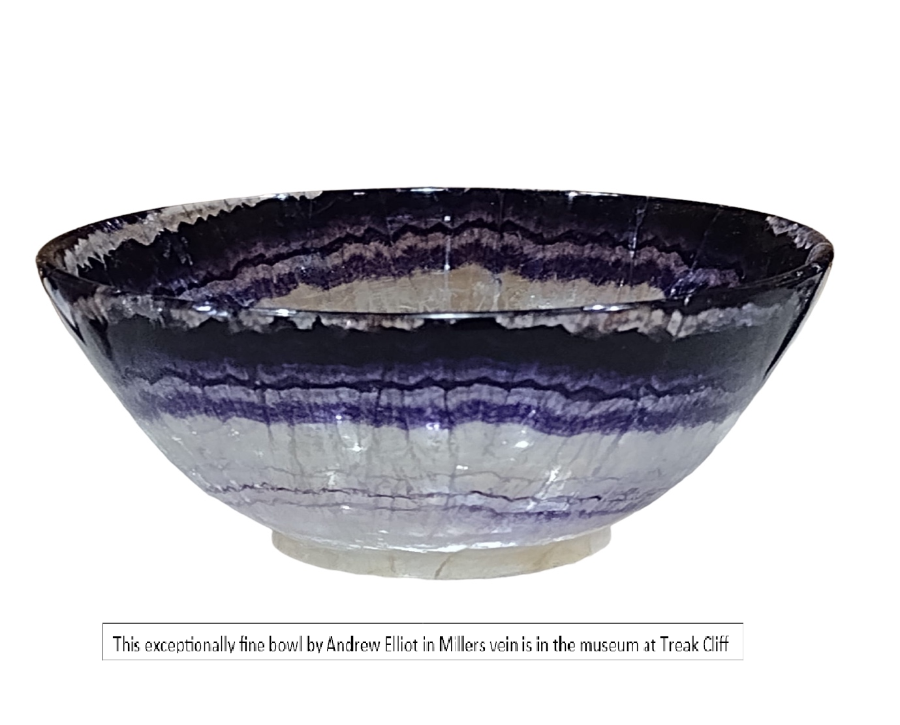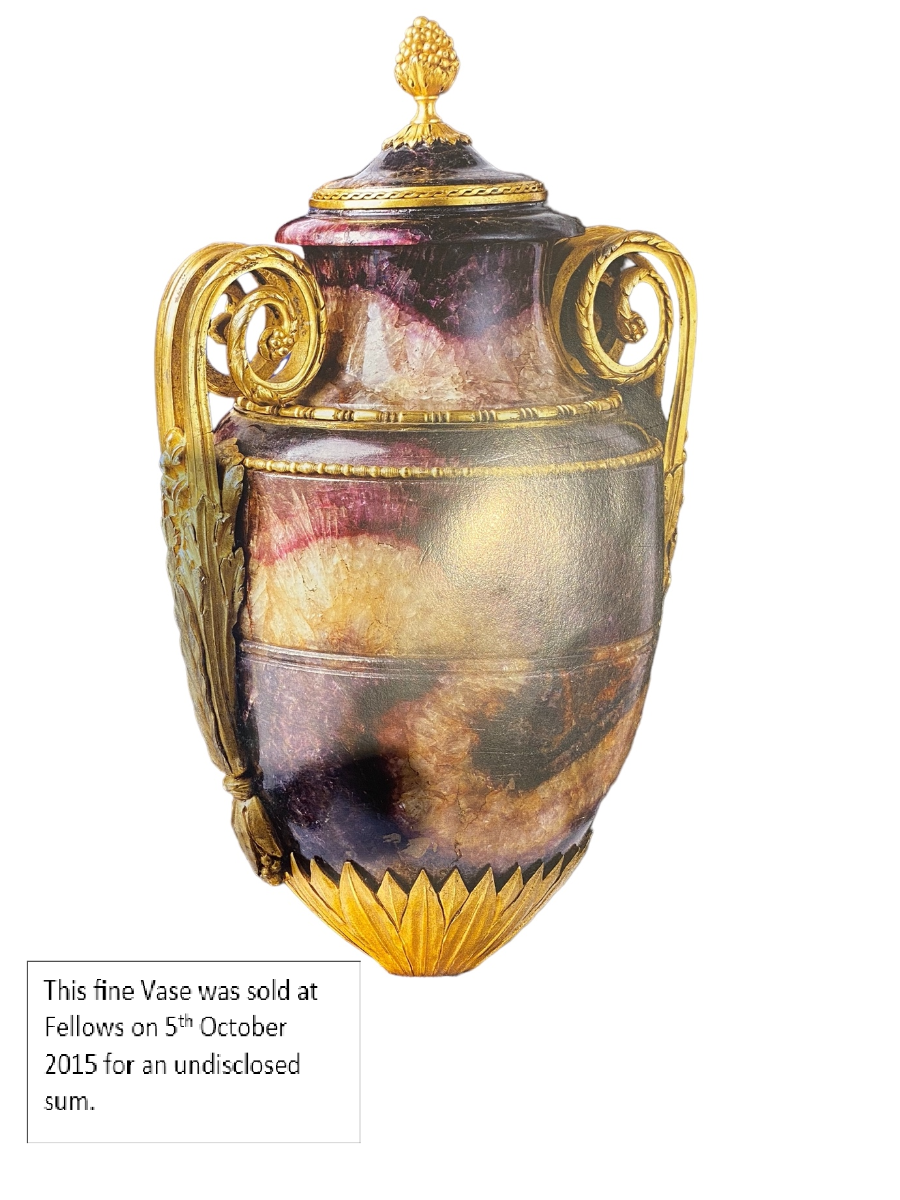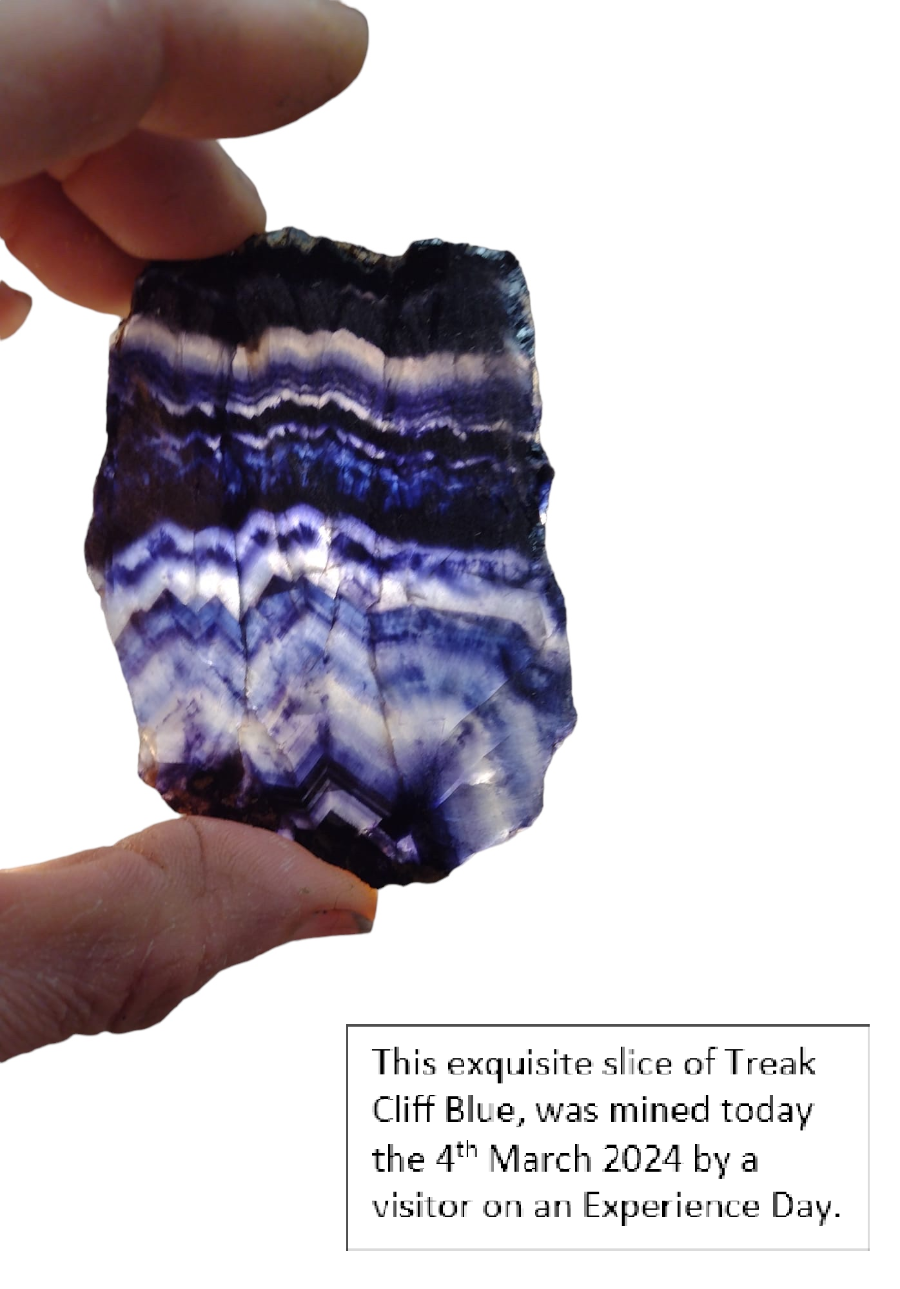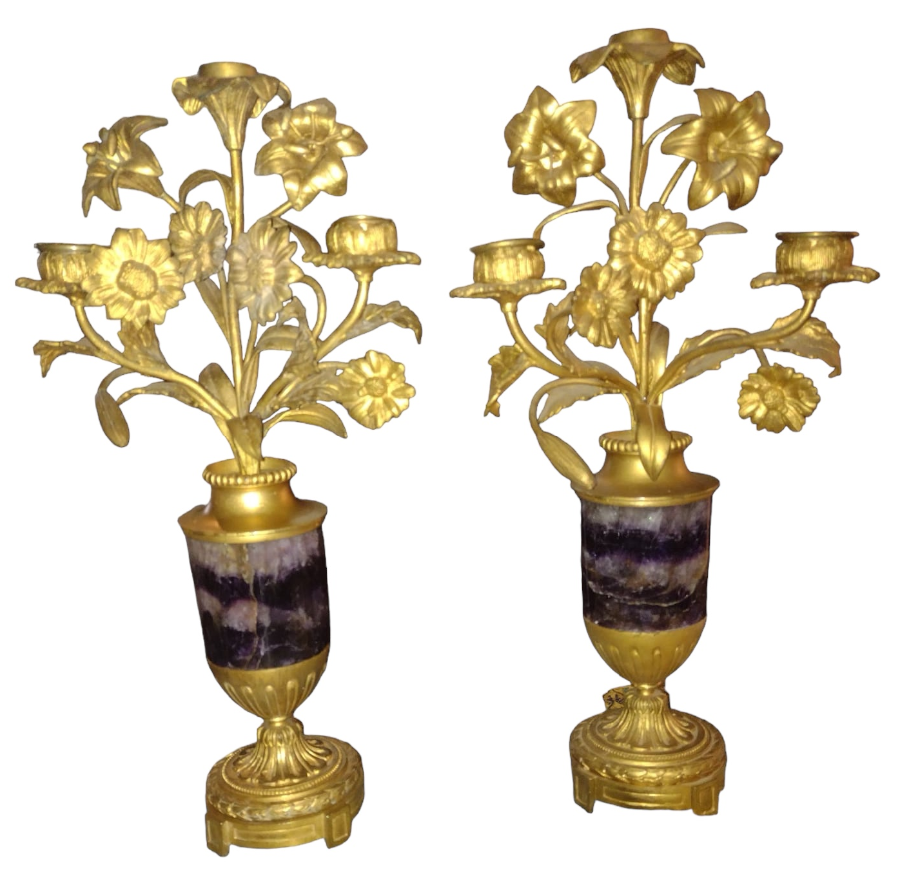The History of Derbyshire's Blue John Stone And Its Significance
Introduction:
When people search for Blue John caverns and stones, they barely scratch the surface as there is far more to this unique fluorspar than five minutes on the internet will ever uncover. Nestled in the hills surrounding Castleton, is not only a walker’s paradise, but the rarest minerals are found in the Blue John Caverns, Blue John stone. Unique to these hills of Derbyshire and as a corollary to that the whole world, this fascinating and beautiful mineral, has such a story to tell: from the Georgian lead miners and Matthew Boulton’s opulent ormolu and Blue John pieces, to the modern tourist attractions the Blue John caverns, though particularly Treak Cliff have become today. I am consistently reminded of Coleridge’s words in Kubla Khan, though not in any Stygian sense, “through caverns measureless to man…” 1 when I start to think about the range and importance of the Blue John caverns, their historical, political and sociological association as well as their critical geological role, and their extraordinary evolution from arduous work spaces to modern tourist attractions and the importance this extraordinary mineral has and continues to have on our lives. Blue John caverns are the home and the source of this extraordinary mineral.
Geologically unique to Treak Cliff
Treak Cliff is situated on a spur of limestone and contains all the Blue John caverns. Rising then to the magnificent Mam Tor, these guardians surround the Peak District village of Castleton. The Blue John caverns are renowned for exceptional cave formations and the rarest Blue John mineral. Attracting cavers, climbers and visitors alike, the caverns have been a beacon for exploration: from the early lead miners to present day tourists. This geological wonder needs some scientific explanation prior to extolling the many virtues of this remarkable stone, as its history dates back millions of years.
Geologically, the area for Blue John caverns is formed on Treak Cliff, ‘a roughly shaped triangular hill at the most northerly point of the Carboniferous Limestone massif …forms the White Peak.’ 2 Winnats Pass is the southernmost boundary for Treak Cliff. This mineral is found nowhere else in the world. A brief description of the formation of Blue John follows, though the detail of the formation of the White Peak is far more complex; it is simply intended to give an indication of the geology. The limestone depositions of the White Peak were halted by the tectonic movements of the earth’s crust which raised these areas above sea-level and were then subject to natural erosion. These reefs, were then buried under sedimentary deposits during the next ten million years. After a small interval in geological time, these reefs were buried under a very thick sediment, which originated in a southern-flowing river system, where we can see parts of, ‘the Highlands as eroded remnants.’ 3 The upheaval the same forces caused the area to subside and put very simply, this massive delta created huge wetlands and swamps where the plant-life was buried under pressure and bacterial decay formed bituminous oil. Interestingly this oil is present in the latest discovery of Ridley vein at Treak Cliff Cavern.
Initially all the mining in and around Castleton was related to lead mining, though gradual exploration exposed an interesting new mineral, the fluorspar Blue John.

Treak Cliff Cavern:
Treak Cliff operates as a wonderful tourist attraction and has done since 1935. Vicky Turner is the third generation to operate this business. They offer the very best of tourist experiences, from the up to date self-guided audio tour, to the full day experience where you get to ‘mine’ and make your own items. This is only available every year during the winter months. Guided tours are available for schools and groups, but you must book ahead for these experiences as they fill up quickly.
The importance of Matthew Boulton items:
Blue John, named after the French words "bleu et jaune" for its striking blue and yellow hues, is more than just a mineral; it's a symbol of beauty, rarity, and social as well as design history. For centuries, artisans and craftsmen have used Blue John to create exquisite jewellery, ornamental pieces, and collector's items. The appeal of This exceptionally fine bowl by Andrew Elliot in Millers vein is in the museum at Treak Cliff Blue John lies not only in the stunning aesthetics but also in the rich history and tradition associated with them.
Because the decorative items became favoured by the aristocracy, from the late part of the 18 th century and this had the consequent effect of Castleton becoming a tourist destination, with Blue John Cavern opening to visitors from around 1777. Both Peak Cavern and Speedwell had shops selling Blue John items though neither had any direct connection with Blue John working. Primarily, Castleton was a lead-mining village, though mineral rights passed through several agents between 1791 and 1891. Most importantly the whole of Treak Cliff was leased to the partnership of Lowe and Eyre. There were a number of workshops within Derbyshire, turning bowls, chalices candlesticks, obelisks and jewellery. The annual output of Blue John was limited to three tons. In 1935, Treak Cliff Cavern was opened as a visitor attraction which gave a boost to public interest. Treak Cliff Cavern has been operated by the Harrison Family since then and they have established a wonderful museum, a workshop which produces fine Blue John items by Andrew Elliot, Jack Mosley and John Turner.
Historically, the decorative pieces were hand turned then decorated in ormolu, which is gilding over bronze. Matthew Boulton, whose pieces are sought after worldwide, entered into secret negotiations with John Whitehurst in1768, 4 where he asks that his name and Blue John be not mentioned in the same sentence. His operations were based in the Soho works in Birmingham, and he produced a small amount of ormolu for the grand houses. The term ormolu means to shape or mill gold, where a mixtire of gold and mercury were applied to the item, then exposed to extreme heat, where the mercury vapourised, leaving the gold adhered to the object. Boulton’s friendship with the architect Robert Adam led to Boulton making fixtures and fittings in this way. Significant historically because by the late 1760s, the arictocracy and newly rich industrialists were building stately homes. It was a business opportunity for Matthew Boulton and after the end of the Seven Years War, 5 he produced a catalogue of vases, candelabra, and other articles, based on the classical designs of Greece and Italy. Ornate, with swags, scrolls and foliate gilding his pieces were highly sought after and a number of stately homes including Chatsworth and Kedleston Hall had spectacular vases, and fire places made by oulton and designed the latter designed by Robert Adam. Boulton’s pieces are celebrated, desirable and out of reach for many. In a recent auction by Fellows a number of Matthew Boulton pieces were sold including this vase:


For those of us seeking something of this sort of history and brilliance, need look no further than Tennants Spring Sale on the 16th March 2024, where lot 137 is a pair of gilt-metal mounted Blue John candelabra in the manner of Matthew Boulton. Below you can see an ormolu candelabra, a pair of these are to be offered for sale by Tennants. The candelabra offered for sale by Tennants are portrayed in the image below. Happy hunting in the Fine Spring Sale on the 16th March 2024.

Author: Jane Anderson
Owner of the Antiques Bazaar